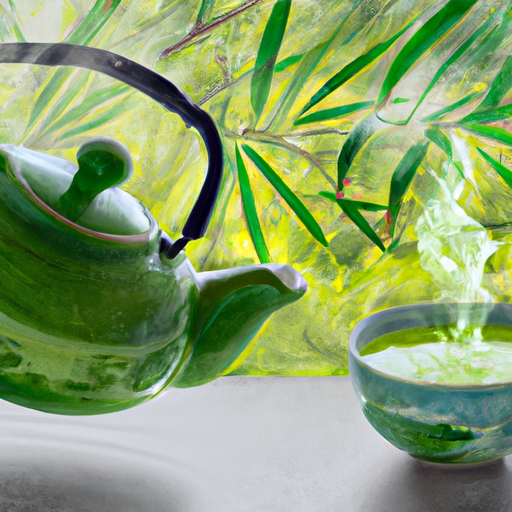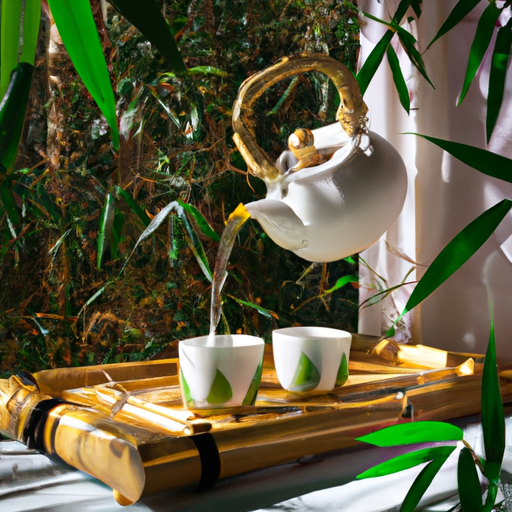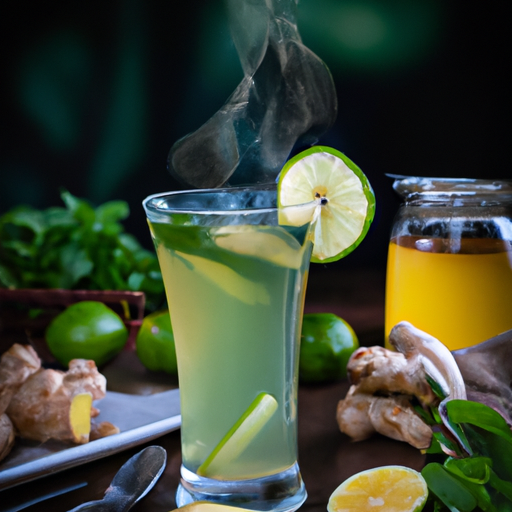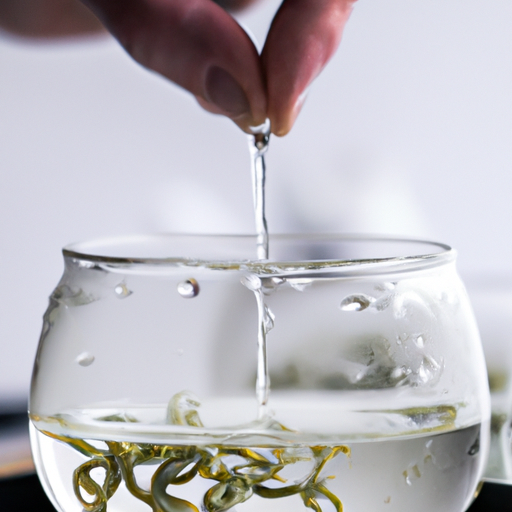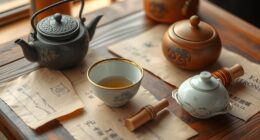I firmly believe that **Japanese green tea** is special because of its amazing flavor and expert craftsmanship. It’s like going on a trip through time, exploring the fascinating origins and customs of this ancient drink, giving you a unique and rejuvenating feeling. Discover why **Japanese green tea** is truly one of a kind.
With its distinct flavors and aromas, Japanese green tea stands apart from its Chinese counterpart, captivating tea enthusiasts around the world.
There are various types of Japanese green tea to explore, each with its own unique characteristics. From the popular Sencha to the highest quality shade-grown Gyokuro, and the powdered Matcha, there is a tea to suit every palate. The processing and brewing methods play a crucial role in bringing out the best flavors and aromas, making each cup a work of art.
If you’re looking to embark on this refreshing journey, there are excellent online sources to buy Japanese green tea. Companies like Palais des Thes, Adagio Tea, The Tea Spot, Matcha Source, and Ippodo offer a wide range of options to satisfy your tea cravings.
Join me as we delve into the art of Japanese green tea, exploring its types, processing techniques, and where to find the finest teas. Get ready to awaken your senses and embark on a truly refreshing journey.
Key Takeaways
- Japanese green tea is considered some of the best tea in the world.
- There are different types of Japanese green tea, including Sencha, Bancha, Gyokuro, and Matcha.
- Shade-growing and steaming during processing are key characteristics of Japanese green tea.
- Brewing Japanese green tea requires using cool water and experimenting with brewing times and temperatures.
Types of Japanese Green Tea
I’ve learned that there are several types of Japanese green tea, including Sencha, Bancha, Gyokuro, Matcha, and others, each with its own unique characteristics and flavors.
Japanese green tea is classified as either shade-grown or sun-grown. Shade-grown teas, like Gyokuro and Kabuse cha, are grown under cover to reduce sunlight exposure and enhance their flavors. On the other hand, sun-grown teas, such as Sencha and Bancha, are cultivated in direct sunlight.
Japanese green tea is known for its numerous health benefits. It’s rich in antioxidants, especially catechins, which have been linked to various health benefits, including improved heart health and reduced risk of chronic diseases. Additionally, Japanese green tea contains vitamins, minerals, and amino acids, such as theanine, which promotes relaxation and mental clarity.
Processing and Brewing
During the processing and brewing of Japanese green tea, it’s important to use cool water and experiment with different brewing times and temperatures. This ensures the best flavor and aroma are extracted from the leaves.
Here are some key points to consider:
-
Steaming benefits: Japanese green tea is steamed during processing, which helps to preserve its vibrant green color and fresh flavor. Steaming also helps to halt oxidation, resulting in a more vegetal and grassy taste.
-
Traditional brewing methods: Japanese green tea is typically brewed using a kyusu, a traditional teapot with a side handle. The tea leaves are placed in the teapot and hot water is added. The brewing time can vary depending on the type of tea, but generally, a shorter brewing time of around 1-2 minutes is recommended to avoid bitterness.
-
Different brewing temperatures: The brewing temperature can also affect the taste of Japanese green tea. For sencha and bancha, water around 70-80°C (158-176°F) is recommended, while gyokuro and matcha are brewed at lower temperatures of around 50-60°C (122-140°F) to bring out their unique flavors.
By following these guidelines, you can enjoy the full experience of Japanese green tea and appreciate its delicate flavors and aromas.
Where to Buy
When it comes to purchasing Japanese green tea, there are several reputable online retailers where you can buy it. Some of these retailers include Palais des Thes, Adagio Tea, The Tea Spot, Matcha Source, and Ippodo. These retailers offer a wide variety of high-quality teas and provide convenient buying options for tea enthusiasts. Each retailer has its own unique selection of teas, ranging from sencha and gyokuro to matcha and houjicha.
These online platforms prioritize tea quality and ensure that customers receive fresh and flavorful teas that showcase the distinct characteristics of Japanese green tea. Whether you are a beginner or a connoisseur, these retailers offer a diverse range of teas to suit different preferences and budgets. With just a few clicks, you can explore the world of Japanese green tea and have it delivered right to your doorstep.
Frequently Asked Questions
What are the health benefits of Japanese green tea?
Japanese green tea is like a gentle breeze that soothes both the mind and body. It aids in weight loss and boosts metabolism, making it a perfect addition to a healthy lifestyle.
How does the taste of Japanese green tea differ from Chinese green tea?
The taste of Japanese green tea differs from Chinese green tea due to cultural significance and farming techniques. Japanese green tea is steamed, resulting in a more vegetal, grassy flavor, while Chinese green tea is pan-fired, giving it a nuttier, toasty taste.
Can Japanese green tea be consumed hot and cold?
Sure, Japanese green tea can be enjoyed hot or cold. For a refreshing twist, try making Japanese green tea recipes like matcha smoothies or iced sencha. Popular brands of Japanese green tea include Ippodo and Adagio Tea.
Are there any specific rituals or customs associated with drinking Japanese green tea?
Japanese tea ceremonies are traditional rituals that involve the preparation and serving of green tea. They use specific tea utensils and have cultural significance, symbolizing hospitality and friendship.
How long does Japanese green tea stay fresh and how should it be stored?
Storing Japanese Green Tea: Tips for maintaining freshness and the best storage methods. Japanese green tea stays fresh for about 6-12 months if stored properly. Keep it in an airtight container away from light, heat, and moisture.
Conclusion
As I take a final sip of my cup of Japanese green tea, I can’t help but feel a sense of tranquility wash over me. The delicate flavors dance on my tongue, transporting me to the lush tea fields of Japan.
Each sip is like a brushstroke on a canvas, creating a masterpiece of flavor and aroma. The journey through the world of Japanese green tea has been a refreshing one, filled with depth and complexity.
It is a symbol of nature’s beauty and the artistry of tea-making. So, as I bid farewell to this delightful beverage, I can’t help but be grateful for the refreshing journey it has taken me on.

